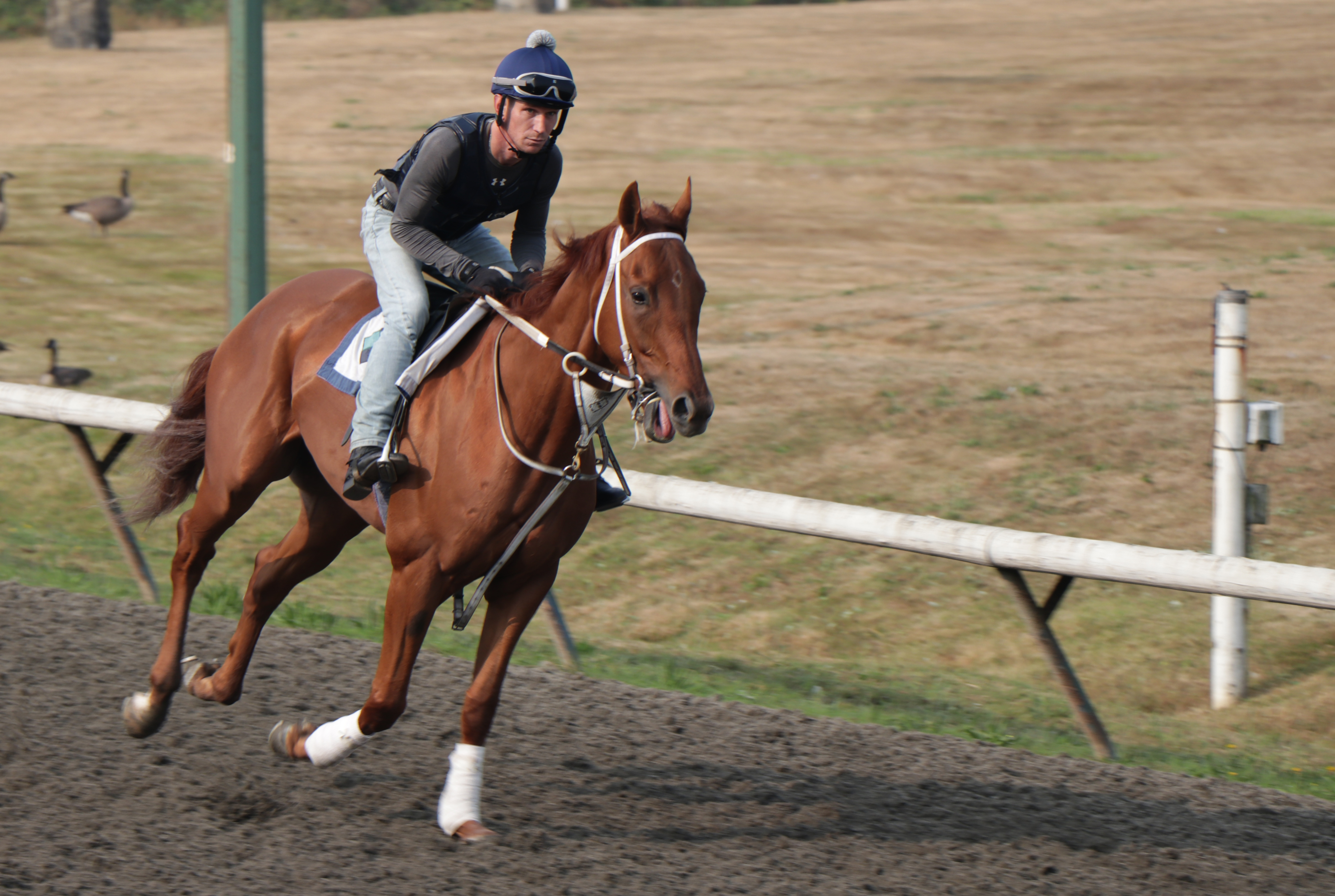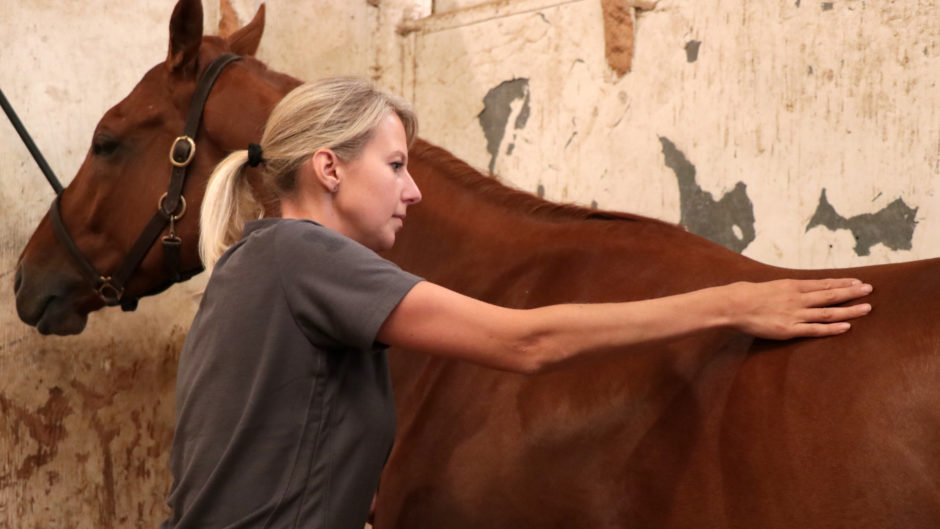August 19, 2018
Natalie Ruthven concentrates as her hands slowly and methodically make their way down the back of a horse in a stall at Hastings Racecourse in East Vancouver.
As Ruthven presses her thumb along the horse’s shoulder, she watches its expression and body language to see how its responding. Judging by its drooping eyelids, slack lips and the tiniest bit of drool coming from its mouth, she assumes it's enjoying the session.
Ruthven is working on Lance, whose race name is Speculator. Lance is a three-year-old Chestnut thoroughbred. He's been in four races at Hastings, and came in third for one of them.
“You’re such a good boy,” she tells him, calm and smiling.
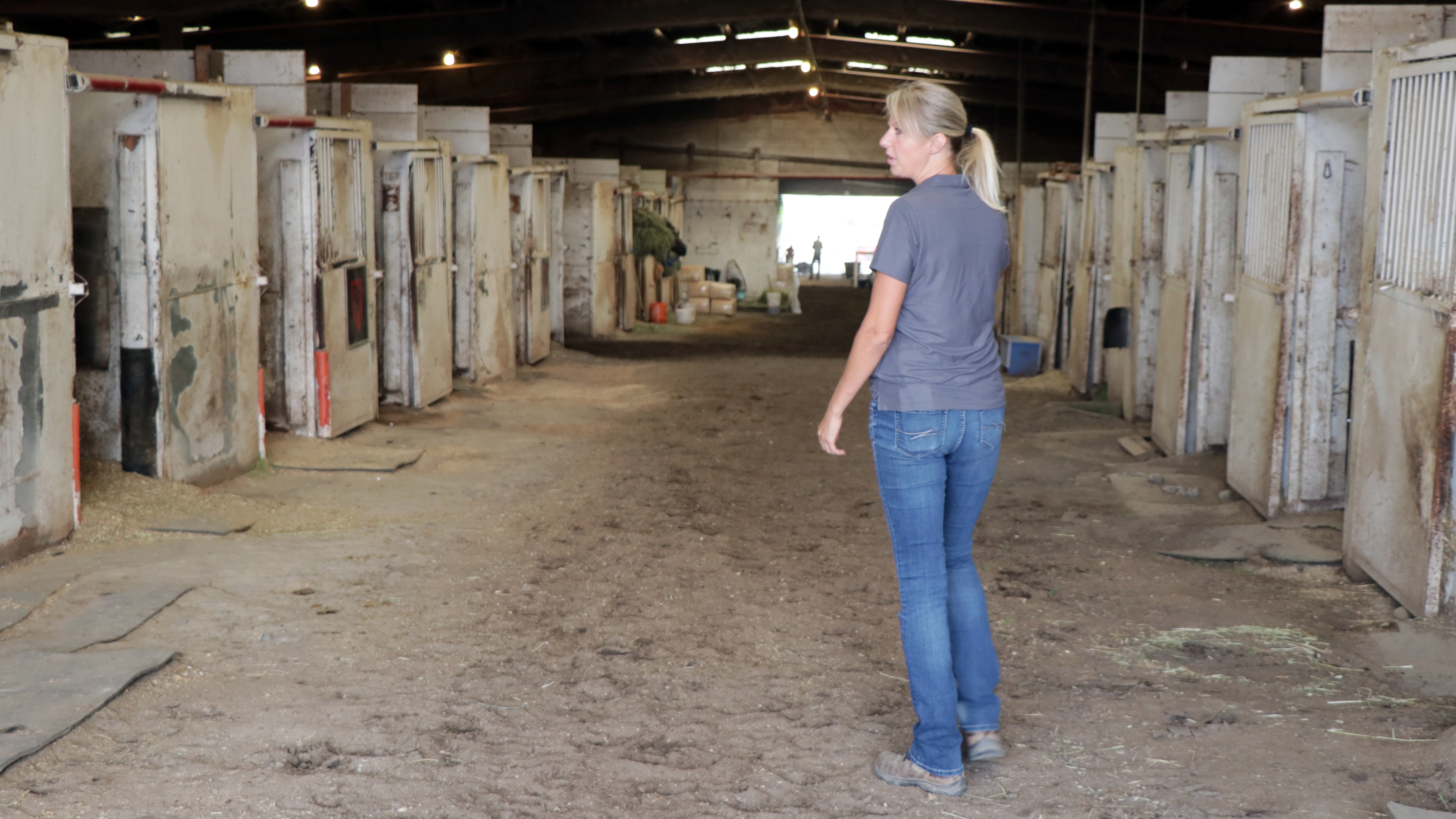
Ruthven, 35, is an equine sports massage therapist who works on professional horses like show jumpers and racehorses.
She works with their trainers to help them achieve a longer, stronger stride to help them win their next race or show.
“Their bodies need to be treated like an athlete's body would be treated. So, same reason you would go for a massage or take care of your body — just to keep it in optimal health,” she said.
The work has its challenges. Over the course of her career, horses have bitten, kicked and stepped on Ruthven. Still, she says the satisfaction she gets from working with them and helping them feel better can’t be beat.
“There’s just something about what horses give to you. It’s very calming,” she said.
“They’re so honest. You never have to guess what a horse is thinking. And it’s very rewarding.”
Watch Natalie Ruthven massage a horse to relieve tight muscles.
Ruthven’s love of horses began when she was eight. She grew up in North Vancouver, where her mother enrolled her in lessons at the North Shore Equestrian Centre.
“I pretty much lived there from the moment I could stay at the barn by myself. My mom would drop me off in the morning and I would come home late at night,” she said.
Ruthven says she has worked various odd jobs at racetracks since 2001. She has cleaned stalls, ridden ponies alongside racehorses and helped train racehorses in Portland.
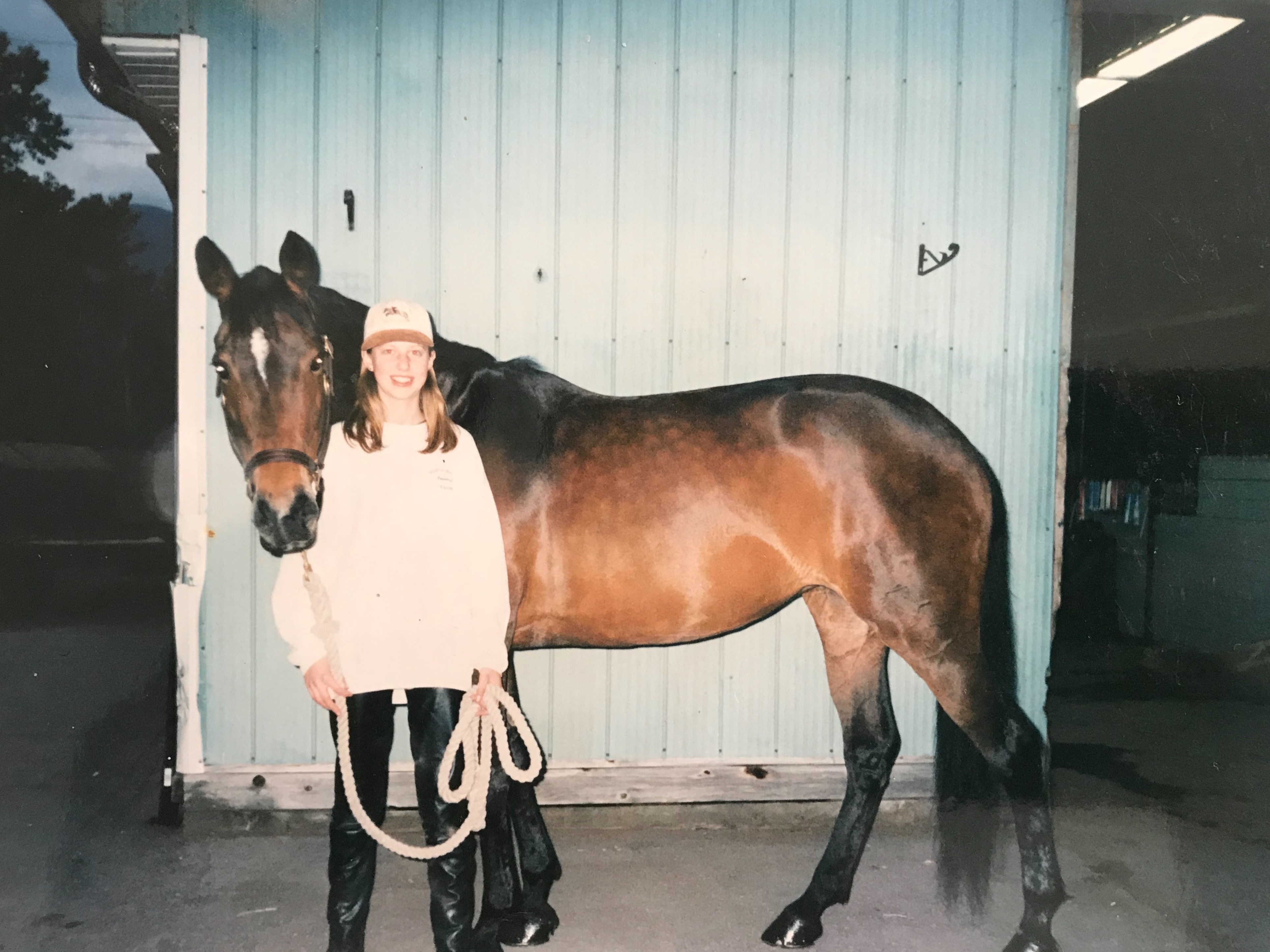
In 2012, she completed a part-time, two-year program in equine sports massage therapy from the B.C. College of Equine Therapy in Vernon. The course covers horse anatomy and physiology and techniques like acupressure and even aromatherapy.
Later, she also completed a one-week program in pulse electro-magnetic therapy in Pemberton. PEMT involves using a device that looks like a lasso covered in surgical rubber to apply an electrically-charged magnetic pulse deep through the muscles.
Ruthven says the idea with the therapy, which she also uses on humans, is to stimulate blood flow through the area to help the body heal itself. She uses it to access muscles deep within the horse’s body that she can’t get to with hand pressure alone.
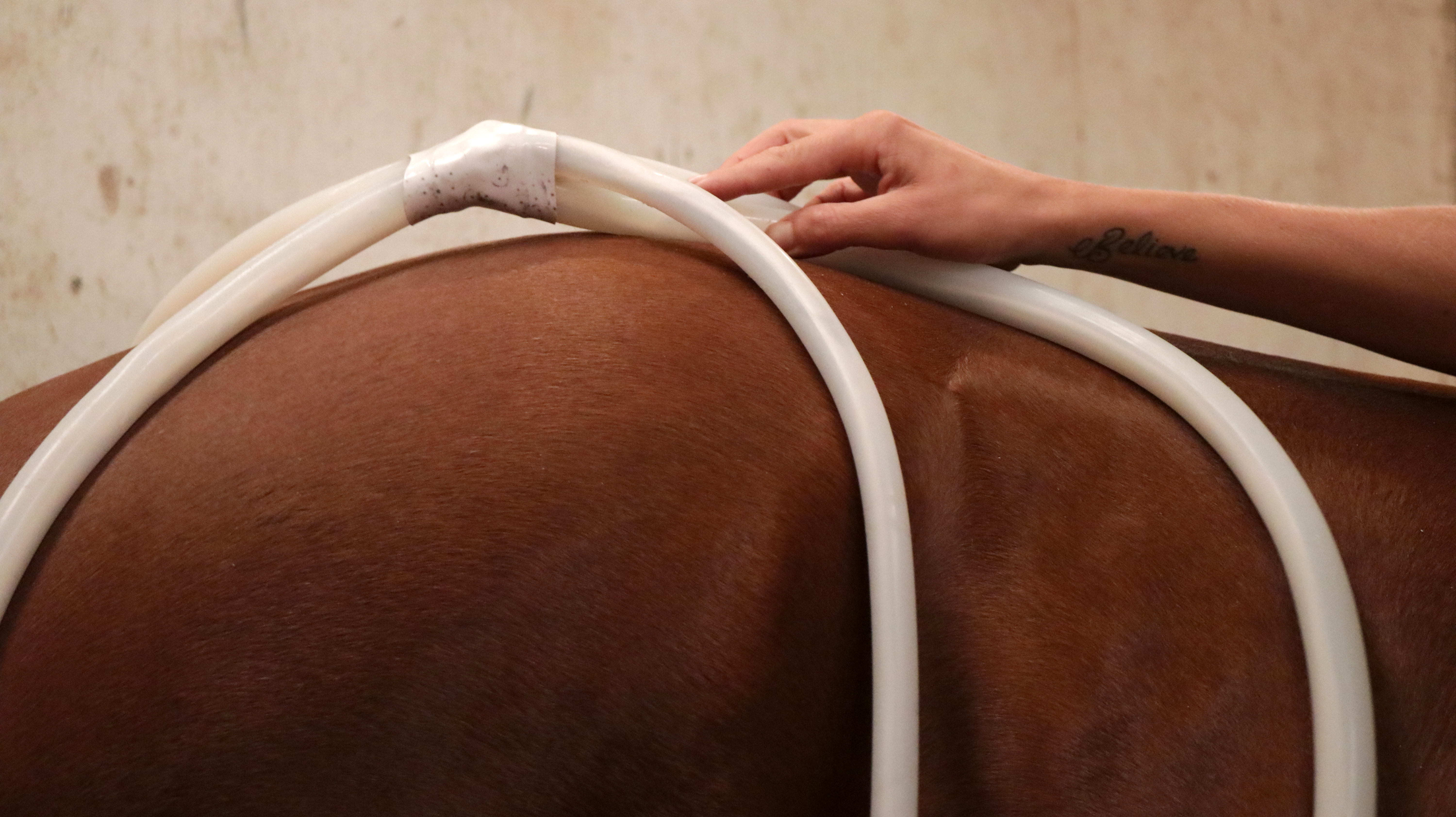
Because the horses can’t tell Ruthven where they hurt or are tight, she works with their trainers to look for clues. This might include watching them gallop, assessing their mood and checking for hot spots along their bodies.
“I try to listen to what the horse is saying to pick up on cues about what they may need,” she said.
Throughout a session, Ruthven constantly monitors the horse to see how it’s responding. If their ears go back or they look upset, she knows to back off. She often works on horses in small, confined spaces like stalls so knowing when to take it easy is key for her safety.
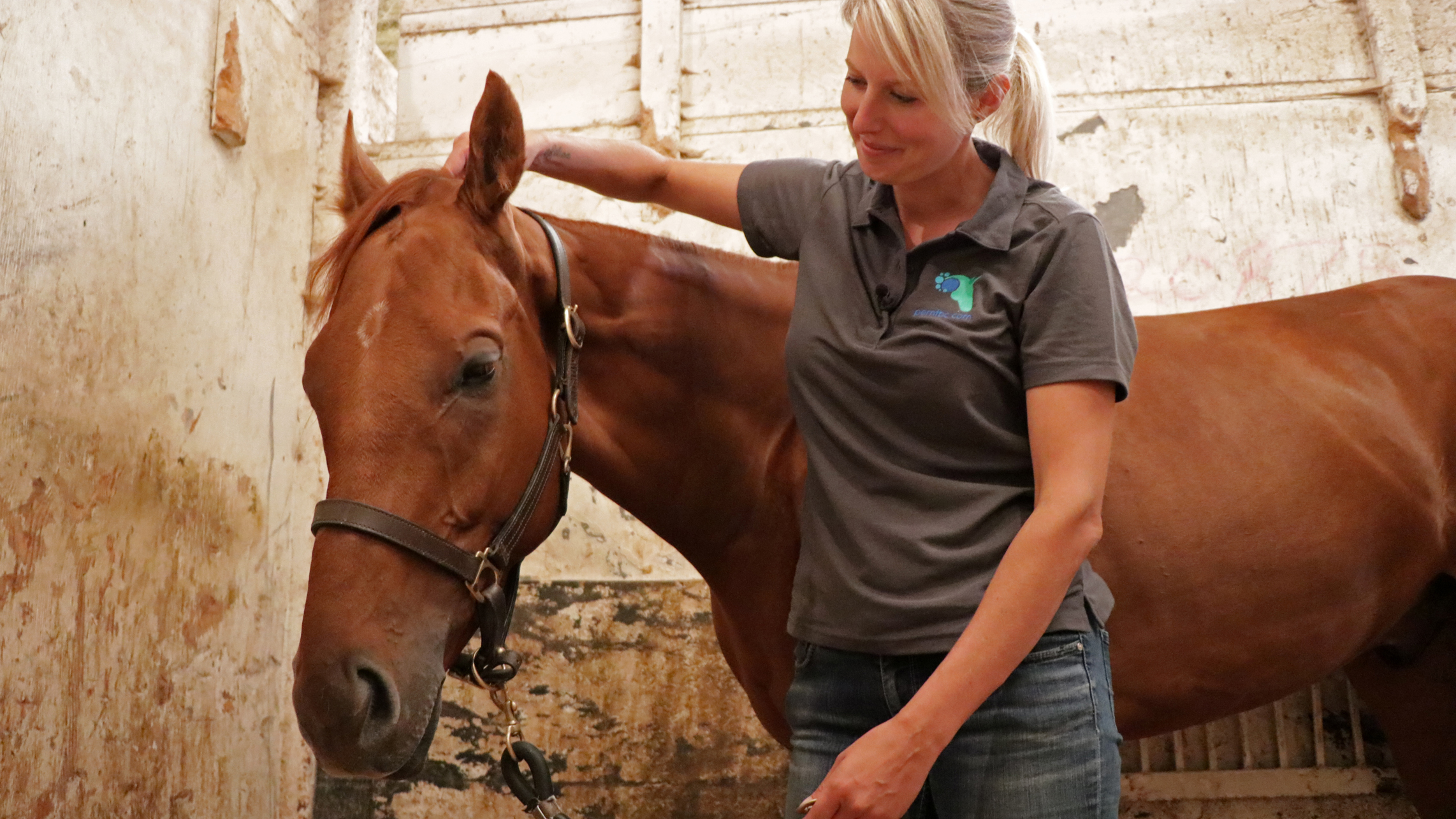
She says most of the horses she works on enjoy it — they often fall asleep, or continue eating. But she has had two horses that didn’t respond well to the PEMT in particular. They got nervous, shaky and sweaty.
Before and after a session, Ruthven also checks the horses’ limbs for range of motion and gently pulls on their legs to help them stretch.
“You definitely want them to have full range of motion in their stride so they don’t have to take as many strides to get around the race track — and win the race, hopefully.”
